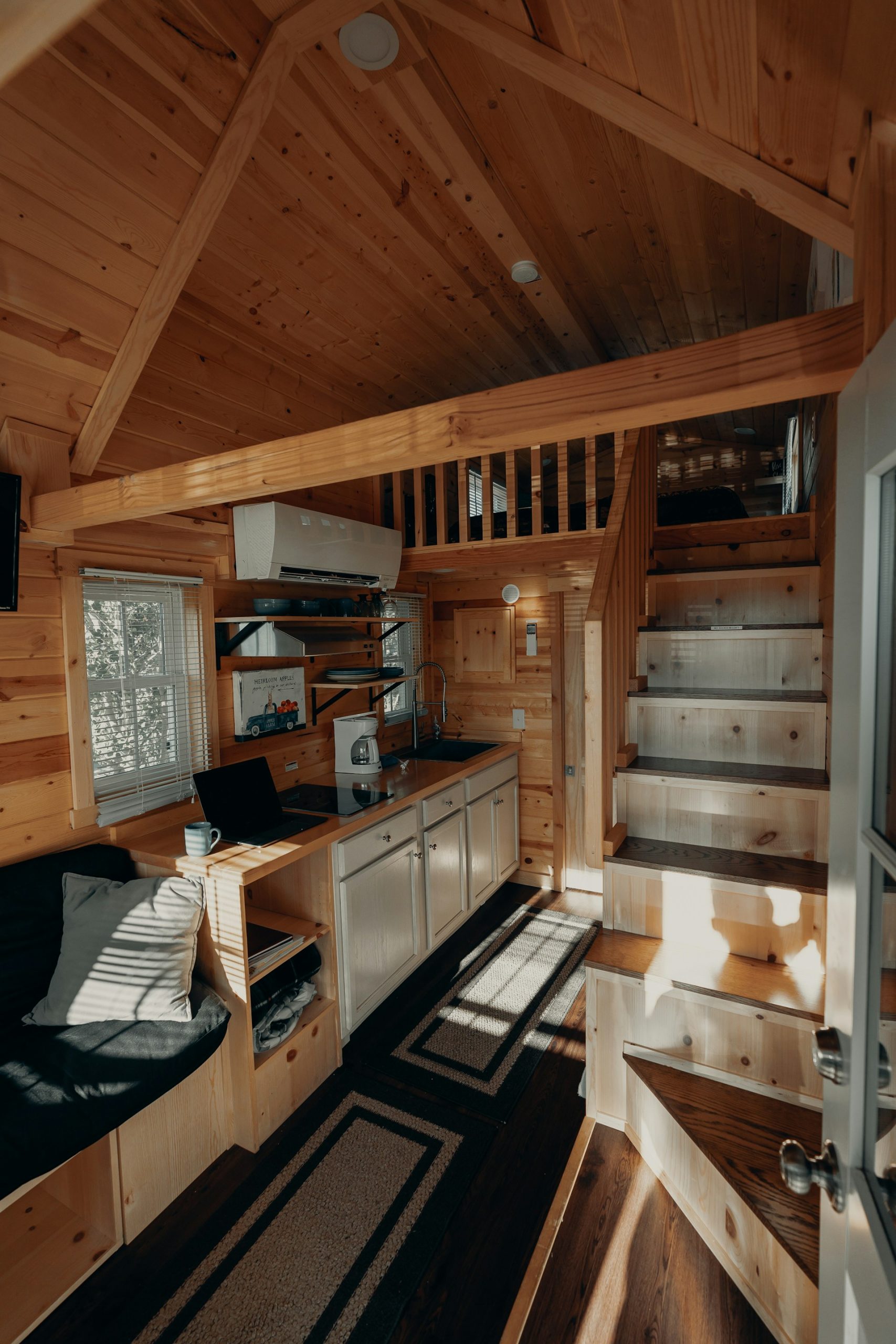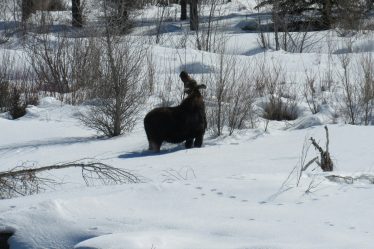
In an age where the average home size continues to grow, a countermovement has taken root, championing the joys and benefits of tiny living. This movement isn’t just about downsizing; it’s about embracing a lifestyle that prioritizes simplicity, sustainability, and connection with nature. One of the most alluring manifestations of this ethos is the small-scale wilderness cabin. These compact dwellings offer their inhabitants a unique blend of adventure, solitude, and comfort, allowing for immersive experiences in some of the world’s most breathtaking landscapes. This article delves into the appeal of tiny living in the wilderness, exploring how these cabins can transform our relationship with nature and lead to big adventures.
Cover photo by Clay Banks
The Allure of Tiny Living
Tiny houses, by their very nature, are a response to the excesses of modern living. They challenge the status quo by promoting a minimalist lifestyle that emphasizes what is truly essential. Proponents of tiny living argue that it’s not the size of our homes but the richness of our experiences that define our quality of life. This philosophy resonates with many who seek to live more intentionally and with greater respect for the environment.
The Environmental Impact
One of the most significant advantages of tiny living is its environmental footprint. Small-scale cabins require fewer materials to construct, consume less energy to heat and cool, and have a smaller impact on their surroundings. They often incorporate sustainable features such as composting toilets, rainwater collection systems, and solar panels, making them an eco-friendly alternative to larger homes.
Design Innovation in Wilderness Cabins
The design of wilderness cabins is a testament to human ingenuity and the ability to maximize space without sacrificing comfort or style. These structures are carefully crafted to blend with their environment, often using local materials that reflect the natural beauty of the area. Multipurpose furniture and clever storage solutions are common, ensuring that every inch of space serves a function. The result is a cozy, efficient living space that feels both intimate and expansive.
The Adventure Awaits
Living in a small-scale cabin in the wilderness is an adventure that beckons explorers to step outside their front door and into the vast, uncharted territories of the natural world. These cabins are strategically located to provide easy access to outdoor activities such as hiking, kayaking, rock climbing, or simply enjoying the tranquility of nature. Their compact size encourages residents to engage with their surroundings, fostering a deeper connection with the environment and prompting them to venture further afield.
Cabins as a Gateway to Solitude
One of the most compelling reasons to choose a wilderness cabin for an adventure is the opportunity for solitude. In our interconnected world, finding a place of quiet reflection is increasingly valuable. These cabins offer a sanctuary where one can disconnect from the noise and distractions of daily life, allowing for introspection, creativity, or simply the joy of uninterrupted peace.
Community and Connection
While tiny living often emphasizes personal space, it doesn’t mean individuals are isolated. On the contrary, wilderness cabins can be part of a community of like-minded individuals who share a love for nature and a desire to live sustainably. These communities often form around a central ethos of respect for the land and each other, creating a supportive network where shared experiences enrich everyone involved.
The Cabin as a Base Camp
A wilderness cabin serves not just as a home but also as an ideal base camp from which to explore the surrounding environment. Its relative permanence provides a stable point of reference, allowing adventurers to return after days spent in the field. This dynamic encourages longer and more exploratory expeditions, as the security and comfort of ‘home’ await upon the return.
Living Simplistically, Adventuring Boldly
The tiny living movement in wilderness cabins is a celebration of simplicity and adventure. It’s a lifestyle choice that encourages exploration, self-discovery, and a harmonious coexistence with nature. The small scale of these dwellings forces inhabitants to prioritize experiences over possessions, leading to a life rich in memories rather than material wealth.
Case Studies: Successful Wilderness Cabin Living
Across the globe, individuals and families have embraced tiny living in the wilderness, each with their unique story. From the handcrafted cabins of Scandinavia, designed to withstand the harshest winters while offering stunning views of the Northern Lights, to the solar-powered retreats nestled in the red rock canyons of Utah, practical case studies illustrate the diversity, adaptability and possibility of this lifestyle.
The Economic Advantage
Beyond the environmental and experiential benefits, tiny living can also offer economic advantages. The lower cost of construction, maintenance, and utilities means that cabin owners often have more disposable income to spend on travel, adventure gear, or savings. This financial flexibility is a significant draw for those looking to live a nomadic lifestyle or invest in once-in-a-lifetime experiences.
Challenges and Considerations
While the appeal of tiny living in the wilderness is undeniable, it’s not without its challenges. Accessibility, zoning laws, and the need for a sustainable water and waste management system are just a few considerations potential cabin owners must address. Additionally, the isolation can be both a draw and a deterrent, as the absence of nearby amenities and community requires a certain level of self-sufficiency and adaptability.
The Future of Tiny Living
As climate change continues to threaten our planet and the pace of modern life becomes increasingly frenetic, the future of tiny living in wilderness cabins looks brighter than ever. This movement is not just a trend but a potential solution to some of the most pressing issues of our time. It offers a model for sustainable living that is both accessible and inspiring, encouraging us to reconsider what we truly need to live fulfilling lives.
Conclusion
The allure of small-scale wilderness cabins lies in their ability to provide a big adventure while promoting sustainability, simplicity, and a profound connection with nature. These tiny homes are more than just dwellings; they are gateways to the great outdoors, offering their inhabitants the chance to live large in every sense of the word. As we face the challenges of the 21st century, the tiny living movement stands as a beacon of hope, showing us that it’s possible to live with less and experience more, all within the embrace of nature’s vast and beautiful canvas. Whether you’re seeking solitude, community, or the thrill of adventure, a small-scale wilderness cabin might just be the key to unlocking a life full of wonder and connection.


